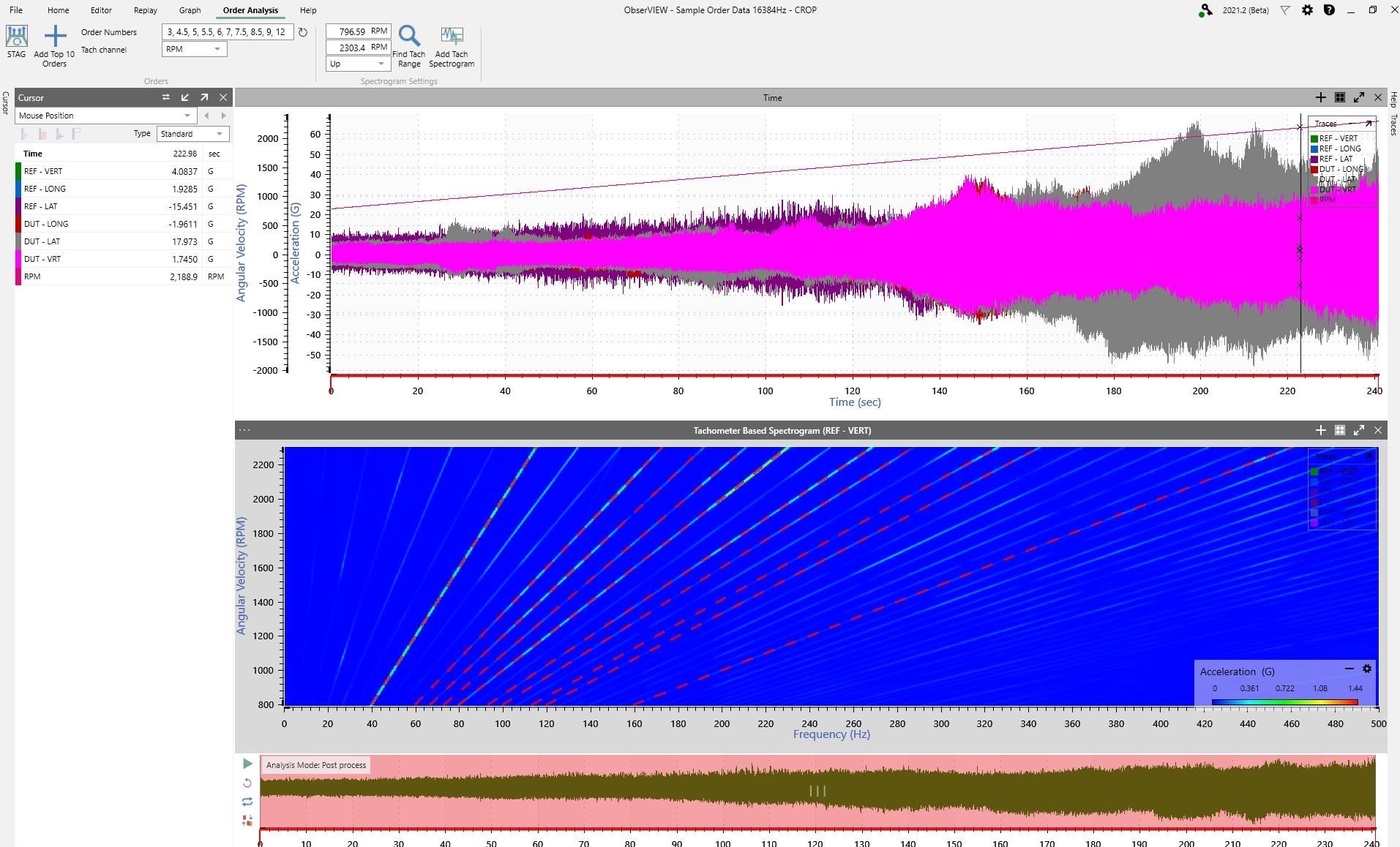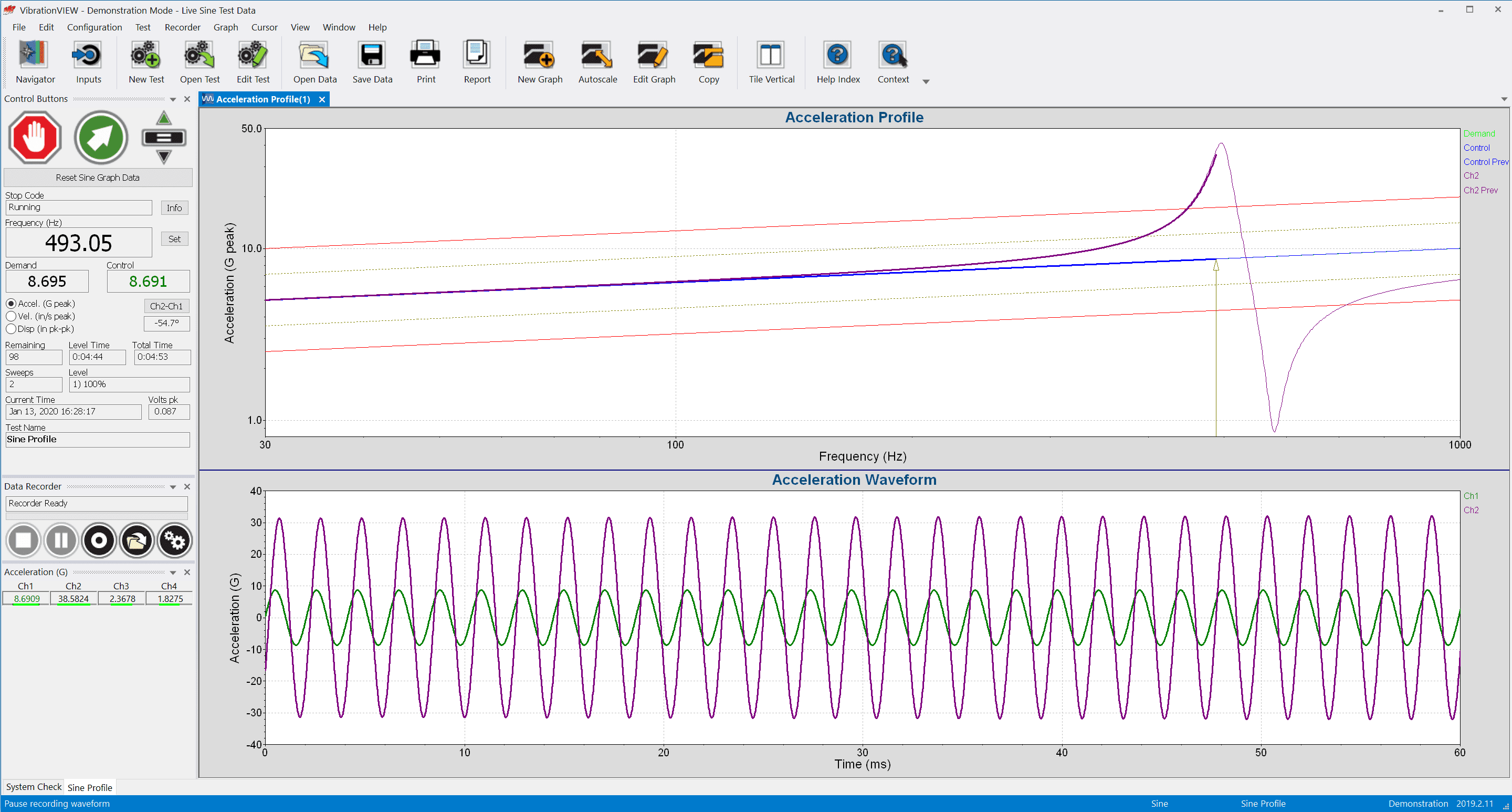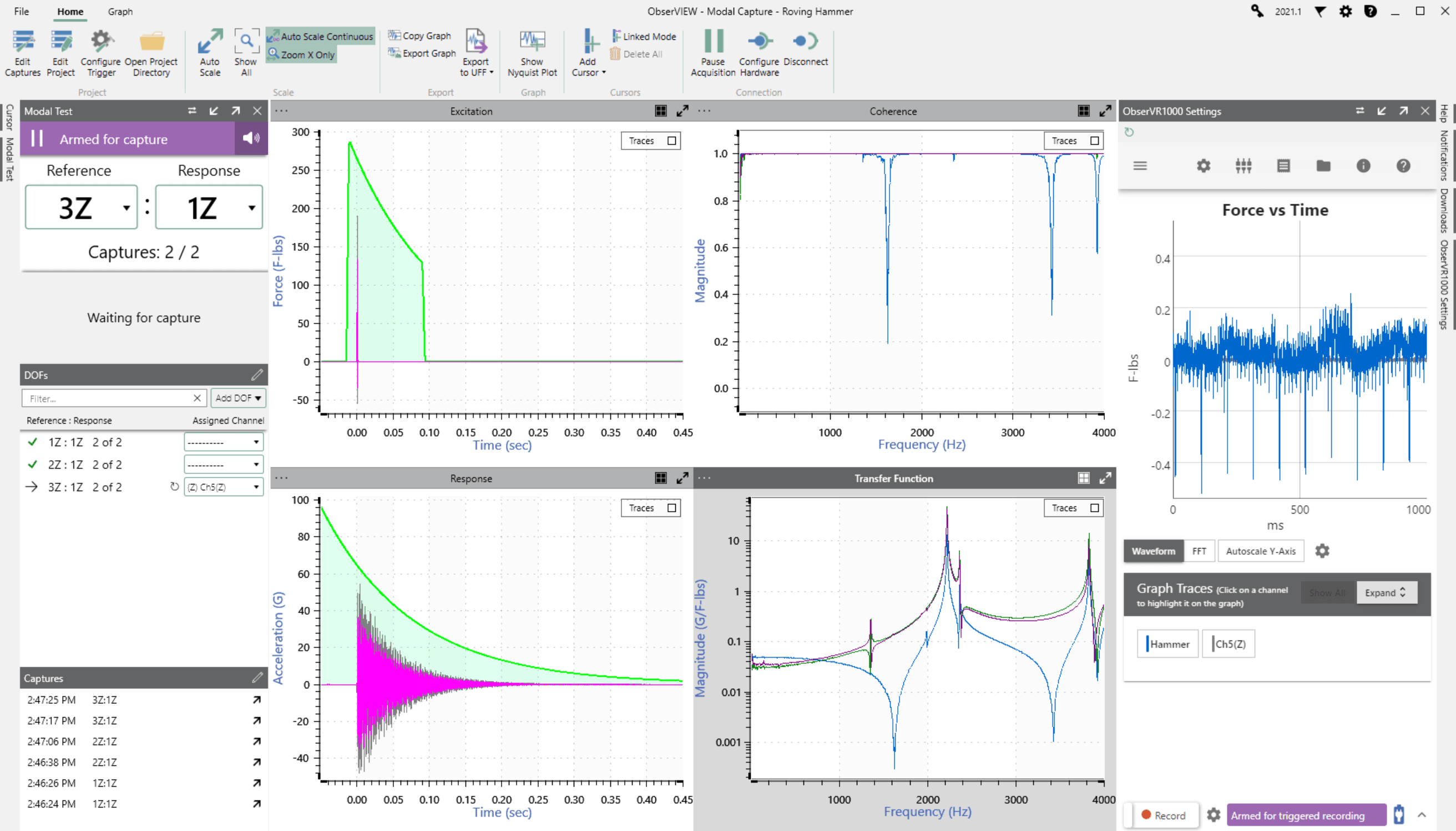Data Recording
In the Lab or On the Trail
Control the ObserVR1000 data acquisition system remotely with the VR Mobile application, which runs on a smartphone or tablet using a WiFi connection. Set up, monitor, and modify field data recording without a wired configuration.
- Tachometer inputs
- GPS capabilities
- 6+ hour battery life
- On-board storage
Fatigue Testing
Creating Tests from ATV Field Data
Use recorded data to replicate the operation of a component. The result is a test profile that closely reflects—or is equivalent to—the field.
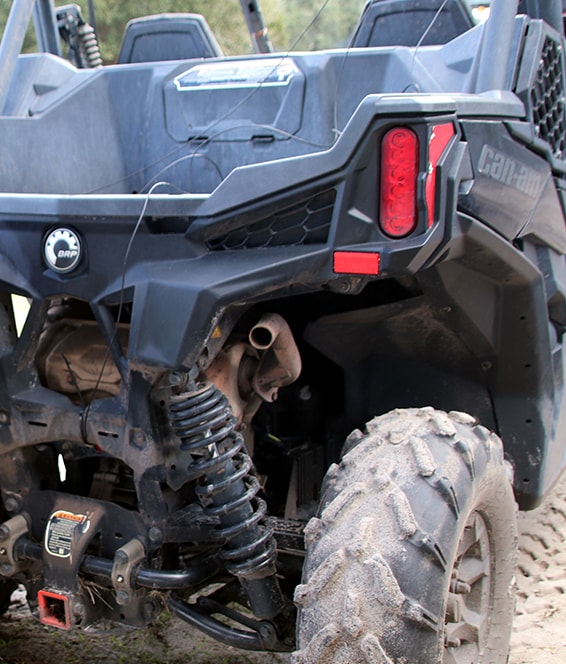
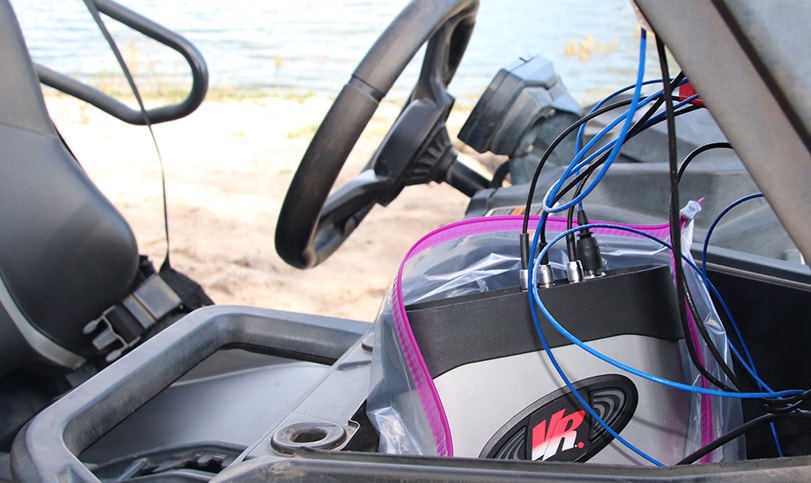
Evaluate Performance
Build and Run a Shaker Test Profile
An ATV’s tires and suspension system help to dampen vibrations, but new parts add weight, and the motor introduces random and rotational vibration. ATV product development requires testing to evaluate comfort compared to recommended values.
- Generate vibration tests from recorded or historical data, including random, sine-on-random, and shock
- Run profiles from test standards, such as MIL-STD-810
- Measure amplitude at contact points such as the seat and handlebars in the x, y, and z directions
- Output customized reports manually or on a schedule
- Examine the coupled effect of the power drive and trail conditions with a transmissibility plot
Order Tracking and Analysis
Examine Rotational Behavior
Analyze the response of the motor system to different RPMs and identify how the component’s vibration contributes to the overall level. Order analysis helps locate and prevent product failure relating to rotational sources of vibration.
- Analyze the noise and vibration of a motor or other rotational component
- Run a ramp up or coast down to evaluate the effects of change in speed
- Separate rotational content from the background random
- View the strength of a signal over time/angular velocity at various frequencies
- Compare data in different domains
Identify Resonances
Resonance increases the intensity of the natural vibration and leads to damage or failure.
Sine Testing
Automatically detect resonances using a swept and/or fixed-frequency sine wave test with control of acceleration, velocity, and displacement. Then, use a sine resonance tracked dwell (SRTD) test to determine the number of cycles required to generate a failure at a specific resonant frequency.
Modal Testing
Modal software divides a complex response into simple mode shapes, each with individual parameters that describe the item’s response to excitation. The overall response helps engineers determine resonances and validate the design.
- Manage table of hits per location and review responses
- Average multiple data acquisitions
- Calculate the decay rate from transient ring-down events
- Manage the acquisition channel using a large, interactive display



